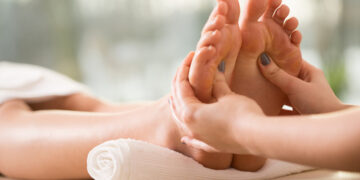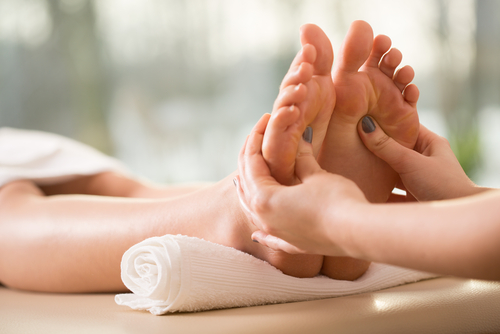Years ago, during my time in a hospital’s recovery ward, I often saw patients show signs of stress that no pill or monitor could quite capture. You could watch it in the way their hands trembled after restless sleep, or the way they flinched even during routine vitals. It wasn’t just physical—it was a whole-body fatigue that lingered under the skin. We had the charts, the medications, the protocols. But still, something felt missing. That curiosity—perhaps even that frustration—sparked my own journey into the world of traditional healing arts.
Reflexology was one of the first methods I encountered after stepping outside of conventional practice. I remember a small wellness center in Chiang Mai, Thailand, where an elderly practitioner with hands like river stones pressed into my soles with methodical precision. It wasn’t a massage—it was something far older and more purposeful. “The feet tell the story of the body,” she said, smiling as if she’d read a page of my health I hadn’t yet opened. Since then, I’ve explored reflexology from its cultural roots to its quiet modern revival in Western self-care rituals.
The Foot as a Map of the Body
Reflexology is built on the belief that the foot mirrors the entire body, with pressure points that correspond to organs, muscles, and energy channels. In Traditional Chinese Medicine, this fits into the broader view of qi, the vital life force said to flow through meridians. When energy becomes blocked—due to stress, injury, or lifestyle—it can manifest physically or emotionally. Reflexology, like acupuncture, aims to restore that balance by stimulating precise points, though without the needles.
Ancient Egyptian tombs depict scenes of footwork that resemble reflexology sessions, and similar traditions have flourished in India, Indigenous North America, and Japan. What struck me most across these cultures wasn’t the technique alone, but the reverence for the feet. In many societies, touching someone’s feet is considered an act of service, humility, or healing. Reflexology, then, is not just physical—it’s relational.
Getting Started: Your Feet, Your Sanctuary
Practicing reflexology at home doesn’t require a certification—just presence and intention. The first step is always preparation. Soak your feet in warm water with a few pinches of salt or a drop of lavender oil. This isn’t just for hygiene—it’s a soft signal to your nervous system: we’re slowing down now. You might even place a warm towel around your feet for a few moments to soften the muscles and awaken sensation.
As you begin, use your thumb or knuckles to explore the sole. You don’t need to find each pressure point perfectly—reflexology encourages intuitive connection as much as anatomical accuracy. But having a general map helps:
-
Toes correspond to the head and sinuses. Gently pressing each toe can support mental clarity and tension release, especially after screen-heavy days.
-
Ball of the foot reflects the chest and heart region. Soft, circular motion here can soothe the nervous system—particularly after emotional stress.
-
Arch ties into the digestive system. Kneading along this area may bring a surprising sense of grounding, especially if anxiety shows up as stomach tightness.
-
Heel connects to the lower back and pelvic region. Pressing firmly here can support physical release, particularly after long hours standing or sitting.
I often recommend starting with the solar plexus point—a gentle divot in the center of the foot, just below the ball. In several traditions, this area is considered a nerve-rich center tied to emotional balance. Massaging here slowly, in small clockwise circles, can induce a surprisingly deep exhale—something we forget how much we need.
Cultural Variations and Universal Lessons
In Bali, reflexology is part of temple ceremonies, where feet are cleansed before prayers. In Kenya, a healer once showed me how they interpret cracks or calluses as signs of energy imbalance, offering herbal salves and foot pressure in tandem. These practices vary in style but share a unifying message: the body speaks through the feet, and by listening, we begin to restore more than just muscle tension.
Even modern spas in Europe and North America have adopted reflexology into their menus—sometimes stripped of cultural context, but increasingly paired with mindfulness or breathwork. Science has begun to catch up. A handful of small studies suggest that reflexology may help lower cortisol levels and improve perceived stress, though much of its power still lives in personal testimony rather than hard data.
From a clinical lens, it may seem subtle, but as someone who’s stood at the bedside of both the over-medicated and the under-touched, I believe subtlety often holds the medicine we overlook.
When and How to Practice
Reflexology fits beautifully into early morning or evening routines. Five to ten minutes is often enough to feel a shift. You can create a ritual around it: soft lighting, calming music, a favorite essential oil. Some prefer to follow a reflex chart, while others learn through trial and touch. If you live with a partner or loved one, exchanging foot reflexology can also deepen connection—serving as both physical care and quiet conversation.
Importantly, this isn’t about fixing something—it’s about tuning in. Over time, you may start to notice which parts of your foot feel tender or responsive, and how that reflects your inner state. Reflexology becomes a check-in, a moment to listen inward.
A Note on Caution
Though generally safe, reflexology is not a replacement for medical care. If you have underlying conditions like diabetes, neuropathy, or circulatory issues, consult a medical provider before practicing. And remember, some discomfort is normal, but sharp or lingering pain is a signal to ease up or stop. The practice should feel nourishing—not punishing.
Returning to the Feet, Returning to Ourselves
The more I travel and learn, the more convinced I am that healing doesn’t always need to come in the form of grand gestures or exotic rituals. Sometimes, it’s as simple as tending to our own feet with attention and care. Reflexology reminds us that every part of the body holds meaning, and every touch can be intentional.
In the end, the feet carry us through life—through workdays, late nights, long journeys, and quiet rituals. By honoring them, even for a few minutes, we take a small but powerful step toward honoring the whole self.



























